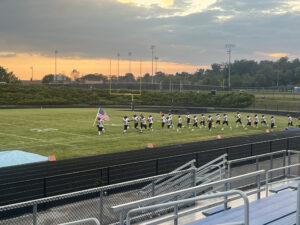For generations, home ownership has been a cornerstone of financial stability and wealth-building in America. Yet climbing interest rates — and, in particular within the City of Falls Church, skyrocketing listing prices — have made homeownership increasingly elusive for many. At the same time, rising rents are squeezing budgets, making it harder to save — especially for young families with additional expenses like childcare and student loan debt. Given these financial pressures, the News-Press sought insight from local realtors on whether it’s smarter to rent or buy in today’s market.
Over the past two decades, housing costs in Falls Church have risen dramatically. Since May, the median sale price for a single-family home in the city is about $900,000, compared to around $600,000 in 2014 and $400,000 in 2004. Since May, nearly twice as many homes have sold at or above $2M (13) than below $1M (7). Townhomes begin right around $1M, condos range from $400,000 to above $750,000. For many potential buyers, the affordability gap has widened with higher interest rates. In 2024, mortgage rates hover around 7.25 percent, compared to less than three percent just a few years ago.
This has a significant impact on what prospective buyers can afford, with the commonly recommended maximum housing cost being 30 percent of gross monthly income, though most suggest 25 percent is smarter. For example, a household earning $164,536 annually (the median household income for the city), under a three percent interest rate, could afford a home priced up to $1.2 million. With a seven percent rate, however, that budget drops to roughly $710,000 — a more than $400,000 difference.
For renters, the situation isn’t much better. The average monthly rent for a one-bedroom apartment in Falls Church is about $2,200 in 2024 (plus an average of $300 between basic utilities and parking), up from $1,500 a decade ago. Throughout the region, rates have doubled or more over the last two decades, leaving many struggling to save for a down payment on a home.
To afford the average one-bedroom apartment in the City of Falls Church without exceeding 30 percent of gross income, an annual income of $100,000 is required.
Aside from what is currently listed for sale, the U.S. Census reports that the median value of all owner-occupied housing in Falls Church (from 2018-2022) was $938,500. For a household to afford a home at this price, they would need an annual income of at least $220,000, assuming a 20 percent down payment and a mortgage rate of around seven percent. This far exceeds the average household income in the region, making homeownership unattainable for many without significant financial resources.
Future interest rate changes could alter housing budgets dramatically — a one percent drop in mortgage rates can boost a buyer’s budget by tens of thousands of dollars — but waiting for rate changes comes with risks. Housing prices have steadily increased over the past decades, meaning potential buyers who wait may face even higher prices down the road.
As Tori McKinney (CEO and realtor at RockStar Realty Group) explained, “There is a cost for waiting. Prices continue to rise. So if a buyer intends to buy within a year, a home will likely cost more next year. Not only will a buyer pay more for the same home, they will lose that year of earning equity.”
Realtors across the area share this sentiment. Albert Bitici (partner and licensed realtor at The Bitici Group) emphasized that the longer potential buyers wait, the more difficult it may become to purchase a home. “Price appreciation for single-family homes remains strong and continues to outstrip the appreciation of townhomes and condos,” he said. “The notion of renting to continue saving for a larger deposit becomes a challenging argument as house price growth, not to mention increasing rental rates, can outstrip any potential savings.”
For first-time buyers, Alison Miller (realtor at KW-United Falls Church) advised considering smaller properties as a stepping stone to homeownership. “When interest rates were in the two to three percent range, it was much easier for first-time buyers to buy their dream home as their first home purchase,” she said. “With higher interest rates, they may only be able to qualify for a condominium or townhouse, but that’s okay. I would still advise first-time buyers to buy that smaller, less expensive property to build equity.”
Despite the challenges, realtors are optimistic that homeownership is still within reach for many — if approached strategically. McKinney underscored the importance of working with the right professionals. “It is essential for buyers to identify the right realtor to help navigate the home-buying process and to help the buyer to be the winning buyer. The next and equally important step is to talk to a lender to get pre-approved for a mortgage,” she advised.
Bitici agreed, noting that many potential buyers don’t realize the options available to them. “Working closely with my buyer clients to carefully assess their affordability and implement a strategic plan to achieve their home-buying goals has resulted in many success stories,” he said.
Ultimately, the decision to rent or buy hinges on individual financial situations and long-term goals. With prices rising and interest rates fluctuating, both renters and buyers face significant challenges in today’s market. But, as McKinney put it, “There is a cost for waiting.”
For those interested in pursuing homeownership, speaking with a realtor and developing a clear plan is critical. No matter the approach, having a plan is the first step toward achieving homeownership in an increasingly competitive market.










